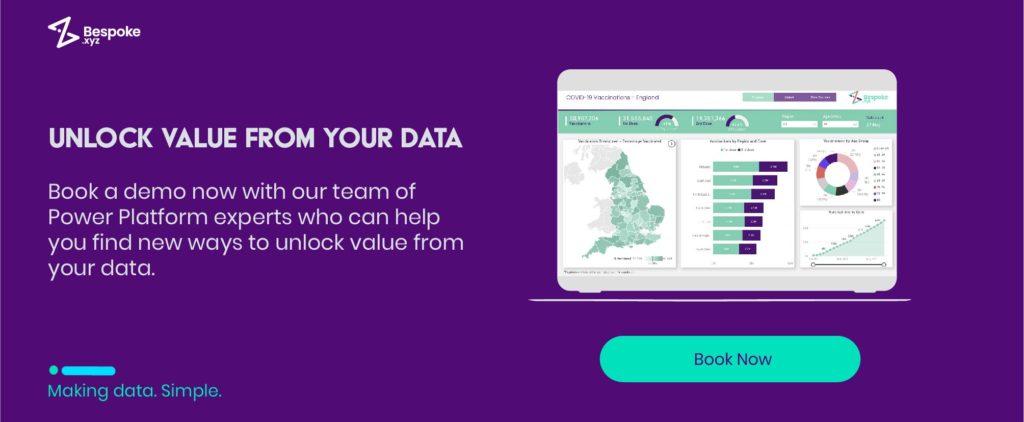You’re probably more than familiar by now with Power BI – Microsoft’s cloud-based data visualisation and analytics tool. Whether you’re still on the hunt for a custom data management system or have decided that Power BI is for you, you may still be a little put off at the thought of actually switching.
After all, doesn’t any kind of platform migration typically lead to lengthy delays, overtime hours and unforeseen costs? Well, you just might be wrong about that…
Here, we’re going to take you through the process of switching to Power BI and hopefully put any doubts or concerns you have to rest. In fact, we aim to have you planning the switch by the end of this article!
Why Power BI?
First, let’s take a quick look at why Power BI has generated so much popularity over the years and is now the leading tool of choice for many of the world’s most iconic brands.
Power BI is an all-in-one solution that can be used to collect, clean and manage data from a wide range of systems and transform it into meaningful insights. As a cloud-based business intelligence service, it can be accessed from almost anywhere, saving time and increasing collaboration for employees and teams. It also saves businesses significant costs in data storage and management, as well as being incredibly secure.
Ultimately, Power BI gives organisations something that’s increasingly important for their success – complete control over their data. Through its many features and capabilities, it gives users an unrivalled 360 degree view of their entire business, opening up the door to market opportunities and saving them both time and money.
Making the switch to Power BI
There are a number of reasons why switching to Power BI is not like your usual DMS migration. Here are some of the main ones you can look forward to:
1. Seamless integration with existing services
Power BI makes it easy to automatically connect your data from various sources immediately after set-up, enabling you to view it all in one place. This means time isn’t wasted migrating data from existing platforms or drawing conclusions from more than one data source.
Power BI’s native integrations include SQL Server, Azure, Google Analytics, Office 365, Microsoft Dynamics, Adobe Analytics, Salesforce, Jira, Mailchimp and many other apps and services your organisation might use. New integrations are always in development too, meaning there’s no limit to the reach Power BI can provide.
2. Quickly connect all of your data in just a few clicks
Because connecting your data is integral to begin analysing and interpreting, Power BI has made the process as quick and simple as possible. Users can connect their data sources in less than a minute with just a few clicks, to begin making use of the tool’s value straight away.
After selecting the appropriate data sources and entering the relevant credentials, Power BI will automatically populate a dashboard with your real-time data, allowing you to immediately start leveraging its insights. For example, after connecting your CRM system and website analytics software to Power BI, you could create a graph directly comparing website visitors with your sales. Dive further and you could even correlate the average time a visitor spends on your website before making a purchase.
3. Built with data governance in mind
Power BI is built with data governance in mind, so enables you to set user hierarchy and company access permissions from the start.
For instance, users can easily apply specific rules regarding data sources, organisational roles, and individual reports to ensure various kinds of data can be seen only by those who need to see it. To make this process even faster, different levels of administrators can be assigned within Power BI who will also have the power to assign access permissions to everyone else in the organisation. These administrators will be controlled by a Global Admin who can assign different administrators for separate data sources or certain types of data, or whatever else makes sense for your organisation.
All of this makes creating a strong and clear data governance strategy easy from the very beginning.
4. No pressure to move everything to the cloud
Power BI is first and foremost a cloud-based platform, but that doesn’t mean customers only have the option of hosting on the cloud. Many businesses are not quite prepared for cloud-based data storage and may want to take less of a leap, in which case Power BI can very much still work for you.
Power BI provides the choice of moving all of your data to the cloud, or perhaps moving just some data while keeping the most important or sensitive stuff on the premises. The Power BI Report server can be used to take reports and dashboards created in Power BI Desktop and deliver them to other browsers and applications, as well as the Power BI mobile app. This allows organisations complete freedom to choose which data they keep on premises and which they decide to put onto the cloud.
There is also the possibility to create hybrid dashboards that use data from both your dedicated server and from behind your own firewall, simply by pinning reports from the Power BI Report Server to the Power BI cloud service.
All of these options enable businesses to transition to the cloud at their own pace and in their own way, while still enjoying the benefits Power BI has to offer.
5. Minimal time training staff
It’s normal to account for staff training and onboarding time when transitioning to a new data platform. However, Power BI is built to be an intelligent and easy-to-use business tool, with its intuitive drag-and-drop interface and simple set-up process. This is why everyone – from seasoned analytics professionals to absolute beginners – will be able to start turning their data into beautiful, informative visuals and valuable insights within just five minutes.
Power BI’s drag-and-drop interface makes it easy to create data-rich dashboards and engaging charts and graphs. Excel and PowerPoint users can jump right in thanks to its many built-in parallels to and compatibility with these tools, such as the ability to import data from an Excel workbook, drag charts to your dashboard or share the workbook with other Power BI users.
Beyond this, Power BI offers an extensive amount of educational information
you can take advantage of, including official guided tutorials and documentation, webinars, training videos, and other resources, all for free. No matter where your employees are starting from, Power BI provides all the support needed to become a data-led workplace.
6. High security & peace of mind
Data security may be a concern when moving to a new data management tool – particularly the additional time or costs involved in ensuring data is kept safe throughout the transition process.
Though no cloud-based system is impervious to attacks, it’s worth knowing that Power BI utilises cloud computing service Azure, one of the most stable and secure platforms available. Azure helps to prevent the unauthorized and unintentional transfer of information in several ways, including making use of both a Web Front-End to handle the initial connection and authentication to Power BI, and a Web Back-End cluster, which takes care of all subsequent user interactions.
The Azure infrastructure also uses a multipronged threat-management approach to continuously strengthen its defense and reduce risks. Power BI also comes with the full support and backing of Microsoft, an industry leader in both on-premises and cloud security. This means you can rest assured knowing your data will remain safe.
Ultimately, no other service can compete with Power BI when it comes to usability, features and value. Hopefully we’ll have convinced you that there’s nothing to lose by switching, but if you’re still on the fence, make sure to book a consultation with our Power BI consulting team to see how you can gain control of your data.


